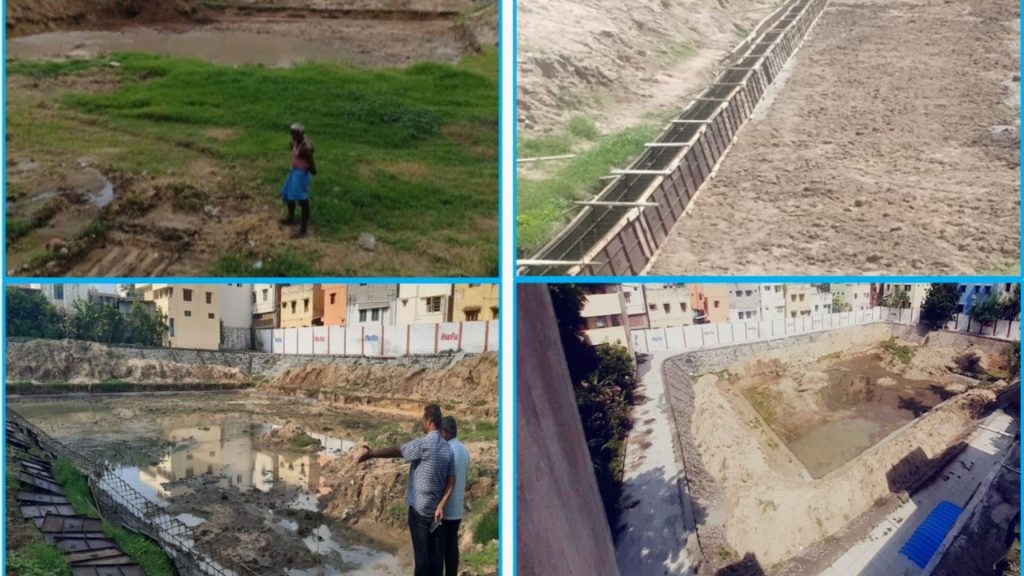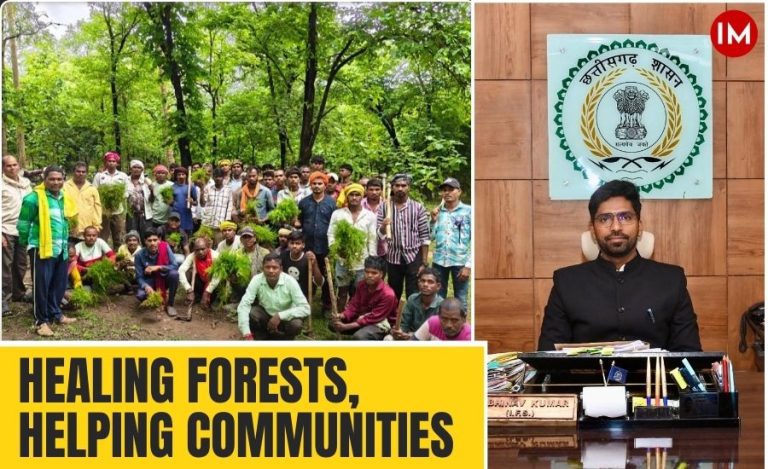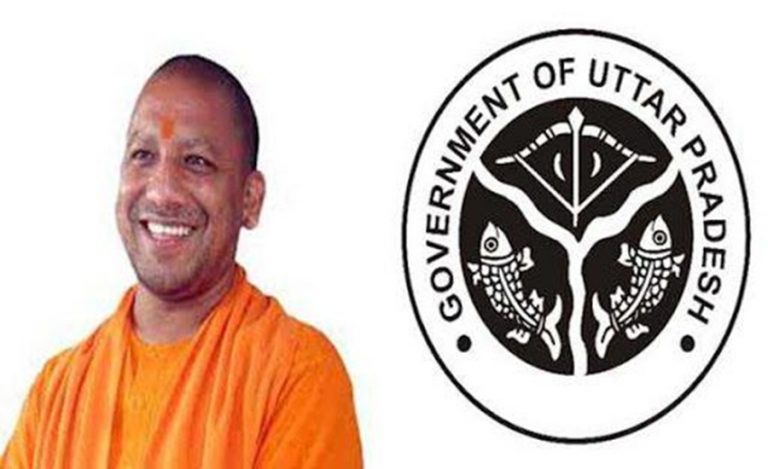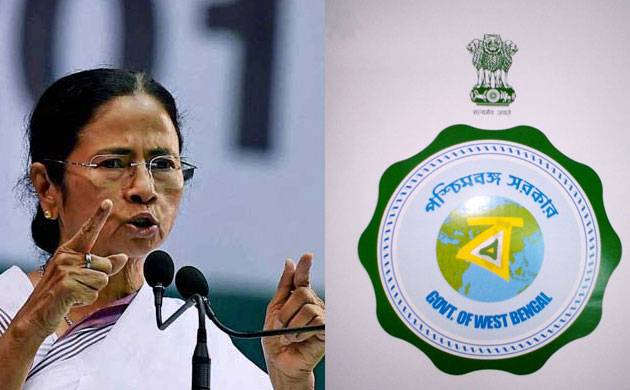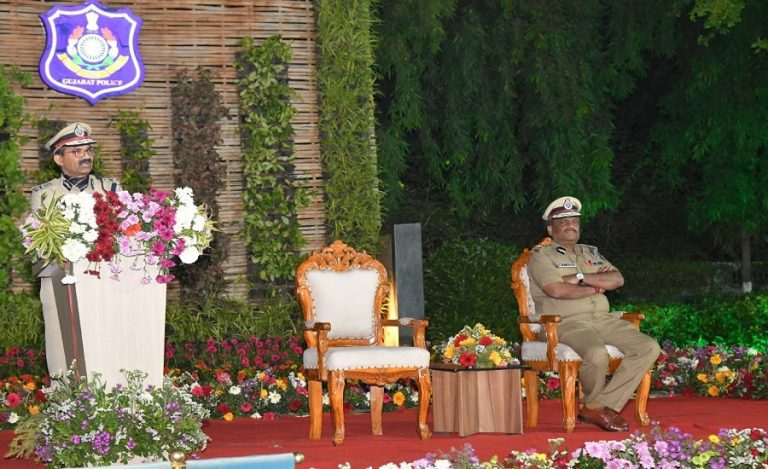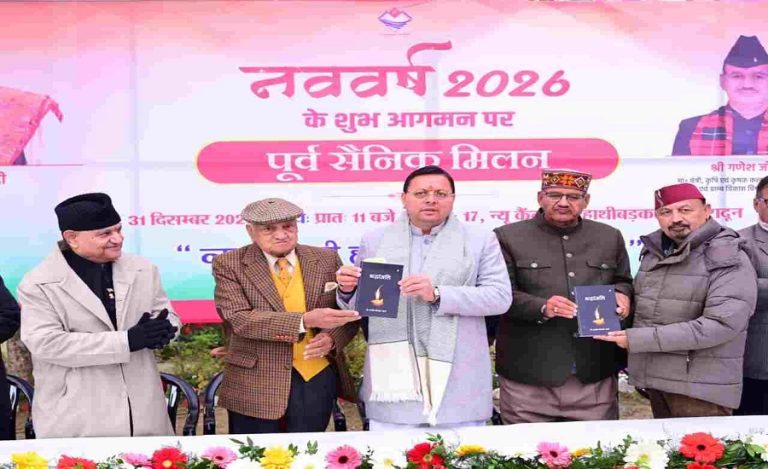The march of human population and human needs have taken a toll on lot of things, as amply manifested in rising pollution, depleting wildlife and receding forest covers all over the planet. India is not immune from such pressures. Chennai, the capital of Tamil Nadu, is also one of the largest cultural, economic and educational centres of south India. At one time it was well-known for its ponds, tanks and rich natural resources. Today, 85 percent of these water bodies have disappeared or are in a state of extreme decay, victim of rising population which needs land for its houses, bazaars and other commercial interests. And not to forget the rising ecological imbalances, which too extracted a big price from the coastal city.
It was under these dire circumstances that the Greater Chennai Corporation Commissioner Mr G Prakash launched a “restoration drive’’ for the water bodies. And all credit to him, because the administration has managed to get 130 ponds and tanks water bodies back to life.
The restoration drive is no less than a miracle. The project to get back Chennai’s lost water bodies was undertaken by the cumulative support of various organisations, such as Greater Chennai Corporation, Chennai Smart City Limited, and various NGOs. In an exclusive interview with Mr Meghanath Reddy, former Deputy Commissioner (Revenue & Finance), Greater Chennai Corporation, we got to know about the issues affecting these natural resources how the administration succeeded in restoring these.
THE ISSUES BEHIND THE LOST WETLANDS
Mr. Reddy told Indian Masterminds, “The history behind the ponds and tanks in Chennai is well known and has been recorded in the books. These natural resources have been existing for long, but the main issue is that they were neglected due to which many of them were not functional.”
Due to the climate change in the past five years, Chennai faced several natural calamities. The city has urbanized rapidly and there has been a loss of wetlands area in the city. Over 85 percent of the area that constitutes the Chennai Metropolitan Area was in a position to function as a wetland, but it has been reduced to 15 percent due to water hyacinth and degradation, water pollution, dumping of waste, and encroachments.

Mr. Reddy said, “As the project required a lot of financial support, we targeted the ponds and tanks which were not too big, to begin with, as we didn’t wish to waste our resources.”
IDENTIFYING THE FAULT LINES
To start with, the corporation first started a validation exercise with the revenue department and identified a total of 210 water bodies. As a first step, 62 water bodies and 15 temple tanks were taken up for restoration and rejuvenation under the Chennai Smart City programme.
Mr. Reddy said, “There were some temple tanks which were maintained by the Hindu Religious and Charitable Endowments (HRCE) department. We took them up straight away, as their ownership was well established. After identifying all water bodies, we compiled the records with the Field Measurement Book (FMB).”
THE RESTORATION DRIVE
Now came the restoration drive. Consultants and hydrologists were engaged to prepare detailed reports regarding the topography, catchment area, water balance study, inter-connectivity of the lake, environmental screening and remedial measures.

Explained Mr. Reddy said, “The goal was manifold, first to secure the area and then create an ecosystem of pond or lake around it so as to prevent the future encroachments. The second was to remove excess earth/ silt due to which these wetlands were neglected for so long. Lastly, we focused on the inlets and outlets.”

The various components of the restoration drive included several measures. These included clearing out landfills, removing excess silt, clearing encroachments from water body areas, preparing inlet drains, construction of toe-wall in the lakes, and bund formations. At the same time, the administrators also concentrated on widening & deepening lakes, retrofitting the areas with walkers’ paths and children’s play spots, bio-fences, and phased plantation.
ADVANTAGES
The cost of the restoration drive came to Rs. 435.37 crores, out of which almost Rs 60 crores were funded by the Chennai Smart City. The project also partnered with civil society organisations, Corporate Social Responsibility funding from various companies, and environmental impact assessment agencies.

By the implementation of this project, around 1 TMC (thousand million cubic feet) of additional water could be stored in 210 water bodies covering an area of 969.69 acres. Out of 210, around 130 waterbodies have been restored as of now. The restoration also increased the average groundwater levels in Chennai by 2.5 metres and rebuilt supply channels through nearby stormwater drains.

There was a further bonus to this exercise. The restoration of water bodies has led to the rejuvenation of natural ecosystems- including the return of aquatic birds and animals. With the creation of open community spaces, residents and walkers now have more places for recreation and exercise.

